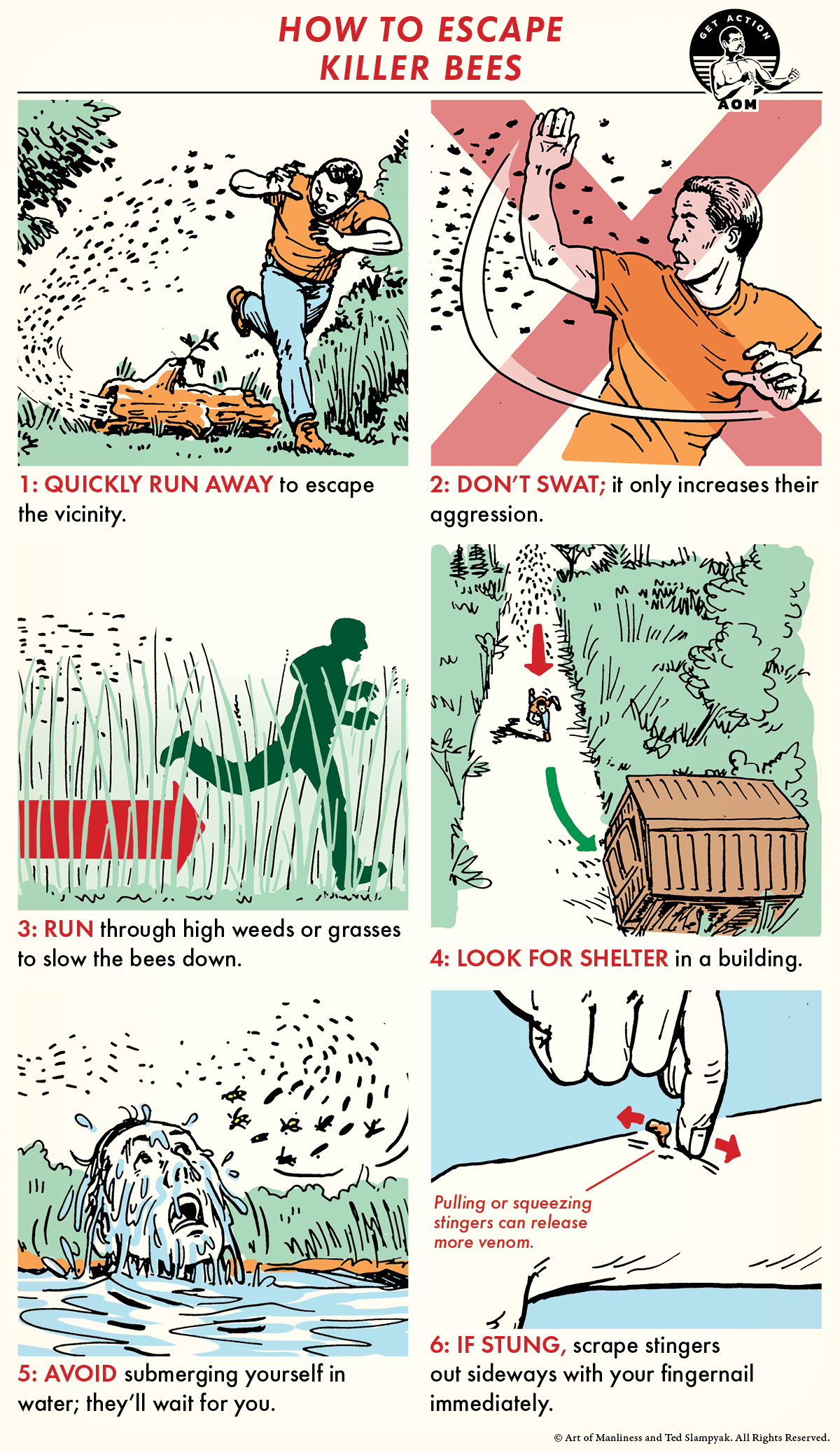
In 1978, The Swarm premiered in theaters across the country and illustrated the raw, destructive capabilities of bees. In the film, starring a young Michael Caine, swarms of bees crash helicopters, derail trains, and wreak havoc on communities. If that sounds ridiculous, it was, but then again, these were not just any bees. These were killer bees.
In reality, when people talk about killer bees, they’re referring to the Africanized honeybee. Developed in the 50s, the Africanized honeybee is a hybrid of Western honeybees and East African honeybees. The purpose of this experimental cross-breed was to increase honey production. But in 1957, swarms of the bees escaped quarantine in Brazil and began working their way toward North America. Today, they can be found throughout the Southwest (as well as Florida) and are spreading a little more each year.
These hybrid pollinators got their “killer†name because of their extremely defensive behavior. They sting more and chase farther, in some cases following people for more than a quarter of a mile. As individual bees, they’re no more venomous than an average honeybee. But as a group, killer bees can become a deadly force; hundreds of their stings will inject enough venom to overwhelm the body’s vital functions.
Killer bees make their nests in all the typical places you’d expect. In rotten logs, beneath house eaves, and underground. They’re typically most aggressive in spring when making new hives. It’s at this time of the year when they tend to move in large swarms. If you find yourself in their path, or accidentally disrupt their hive, here’s what to do.
Like this illustrated guide? Then you’re going to love our book The Illustrated Art of Manliness! Pick up a copy on Amazon.


